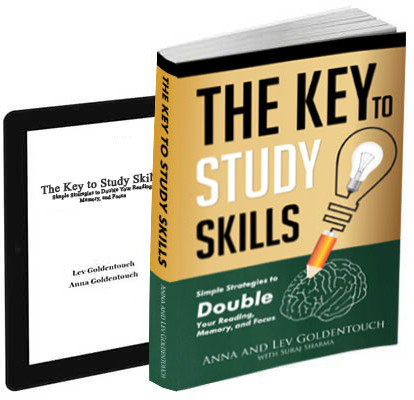Adaptive Learning can be applied to any educational stage. It is a tool with a double learning objective, both academic and technological, since it allows students to become familiar with digital environments.
Tailor-made learning has proven to be one of the most efficient ways to keep both students and teachers fully motivated throughout the entire teaching process. Unfortunately, it cannot be achieved en masse with traditional means, and that is why Adaptive Learning is gaining more ground than ever.
Thanks to the rise of virtual or blended learning environments, such as Learning Management Systems (LMS), the adaptive learning model is moving from theory to practice, and there are even those who believe that it is becoming established as the new educational norm.
How did the adaptive learning model emerge?
Adaptive learning has its bases in the discoveries of great figures of pedagogy and cognition such as Jean Piaget and B.F. Skinner. In 1958, the latter developed a methodology to increase the effectiveness of education under controlled conditions, whose fundamental theoretical pillars were:
- All students have different learning rates and styles, so it is not possible for a single learning mechanism to be efficient for everyone.
- The student must have an active role in their learning process.
- Any learning must be based on clear, measurable and personalized objectives.
- It is easier to integrate small doses or capsules of information, organized logically within a topic, section or box, one at a time, than large amounts of data.
- To accelerate learning, positive or negative feedback should be given immediately after the response.
- The difficulty or complexity expected in the response must be progressive and ascending. That is, going from less to more as the student integrates new knowledge.
Although Skinner’s stance on learning was visionary, the technology at the time was not ready to put his ideas into widespread practice. It was not until the digital age arrived that it was demonstrated how efficient and useful this model is.
Characteristics of Adaptive Learning
As we already saw, the premises of adaptive learning revolve around focusing on the needs, interests and rhythm of the students; This means that the dynamic between the learner and the educational agent must be bidirectional. That is, the stimuli of one party modify the behavior of the other, and vice versa.
With a teacher it is easy to achieve this level of feedback in real time with one, two, or maximum three students, but it is practically impossible in larger groups. It is at this point that technology comes in as support for the educator, allowing a personalized experience to be offered thanks to automated interfaces that adapt to the requirements of each individual.
Taking the above into account, it is important to share some of the characteristics that stand out from Adaptive Learning:
It has a dynamic interface
It means that the means by which the student interacts with the learning content is interactive, flexible and changing. We see the best example by comparing a normal book with an interactive book: the former has a static interface, while the latter is dynamic and can include assessments and activities.
The same goes for virtual classrooms, smart boards, and microlearning apps; They are adaptive interfaces to a greater or lesser extent.
Depends on data collection
For a learning system to adapt and be truly interactive, it must be able to collect certain data from the user that defines certain reactions in the algorithm.
This data can be as basic as the percentage of correct answers and errors in an automated test, or include more complex aspects such as response time, learning style based on preferences or even the amount of time the student has spent interacting. with a particular element.
Perform some level of data analysis
The data that the interactive system collects must be processed by an algorithm that can have different levels of complexity, from the most basic logical responses to programming ecosystems sophisticated enough to be considered Artificial Intelligence (AI) and deploy machine functions. learning.
It is thanks to this algorithm that the system can complete the learning model through personalized feedback.
Generate positive feedback in real time
One of the most important aspects of adaptive learning is its positive feedback approach. That is to say, a kind and motivating way is always sought to lead the student to transcend their areas of opportunity, and always within the immediate territory of learning and in a progressive manner, to avoid feelings of frustration and inadequacy.
Encourage active learning
Finally, the adaptive learning experience not only has the purpose of accelerating the integration and consolidation of knowledge, but also of accustoming the student to being an active, not passive, element of their own instruction, since being the system The one who keeps up with the student, and not the other way around, becomes the leading agent of learning.
Advantages of adaptive learning in schools
In order to implement an adaptive learning methodology, some investment in technology and teacher training is needed. However, these efforts tend to bear fruit immediately since, among other things, it allows:
- That students learn at their own pace, reducing unnecessary delays in areas they already master and avoiding unnecessary pressure in areas of opportunity.
- Generate greater interest in the learning process, since relevant objectives constantly appear that represent a continuous challenge, but always achievable.
- Save time on repetitive and mechanical evaluation or control tasks for teachers, thanks to automation.
- Obtain better participation and approval rates, as well as reduce dropout rates in courses.
- Integrate real-time assessment with the “learning by doing” model.
It is worth mentioning that this system can be applied to any educational stage, from preschool to continuous training in work environments. Likewise, due to its technological base, it is a tool that can have a double learning objective, both academic and technological, since it allows students to become familiar with digital environments.
The relationship of Adaptive Learning with gamification and microlearning
Previously, we had talked about the importance of techniques such as gamification, learning by doing and microlearning for today’s teaching at all levels.
In fact, these three methodologies have a lot to do with adaptive learning and often resort to a sequence similar to Robert Gagne’s model, one of the greatest exponents of hierarchical and dynamic instructional design.
The elements of the Gagne model are:
- Capture the student’s attention with some attractive stimulus
- Inform the objectives in a way that generates motivation and expectation
- Review immediate prior knowledge to better establish foundation and context
- Present a stimulus that triggers selective perception
- Provide a clear learning guide
- Check understanding in the student’s response
- Feedback and reinforce
- Evaluate performance
Generalize knowledge to reinforce retention, that is, take it from the particular to the general.
We can see these types of interactive sequences not only in virtual classrooms, automated tests, digital learning environments and educational apps, they are also the cognitive basis of almost all video games and other entertainment and social bonding activities.

Get 4 Free Sample Chapters of the Key To Study Book
Get access to advanced training, and a selection of free apps to train your reading speed and visual memory

